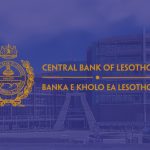
Monetary Policy Committee (MPC) Statement of the 28th November, 2017
November 28, 2017
53rd COSSE Meeting, Thursday 22nd March 2018
March 22, 2018In its 69th meeting held on the 30th January 2018, the Central Bank of Lesotho’s Monetary Policy Committee (MPC) considered global, regional, and domestic economic developments;
as well as financial markets conditions with a view to determine monetary targets adequate to ensure macroeconomic stability.
Global economic growth remained positive, though uneven across regions and countries in the third quarter of 2017. In developed countries, while economic growth rates accelerated in the United States (US), Japan and the Euro zone, it decelerated in the United Kingdom (UK). In emerging markets, India recorded a growth improvement while China registered a slowdown in the third quarter compared with the previous quarter. While inflationary pressures moderated in advanced economies, they were elevated in emerging market economies. Nevertheless, monetary policy stance remained largely accommodative.
Growth in the South African economy slowed down on account of a contraction in manufacturing, amongst other factors, in the third quarter of 2017. Growth outlook is positive but still low. The recent political developments may boost consumer and business confidence. Inflation eased because of reduced pressure from the exchange rate. The Rand strengthened against major currencies in the recent past.
Domestic economic growth is expected to remain modest in 2017, supported mainly by mining and services. In the medium term, growth is expected to accelerate, anchored by mining and construction. The downside risks to the outlook include the subdued growth prospects of SA’s economy and pressure on the domestic fiscal position.
The year-on-year consumer inflation rate registered 5.7 per cent in December 2017. This compares with 5.6 per cent recorded in September 2017 and 5.3 per cent of December 2016. The upward pressure emanated mainly from food and transport categories of the consumer price index.
Money supply increased by 3.7 per cent in December 2017 compared with a rise of 8.5 per cent in September 2017. The deceleration in money supply was due to a moderate increase in domestic claims, coupled with a decline in net foreign assets. Credit to the private sector grew by 3.6 per cent during the fourth quarter of 2017 compared with a lower 0.3 per cent increase recorded in the third quarter. This reflected improvement in credit extended to both households and business enterprises.
The current account deficit narrowed to 3.1 per cent of GDP in the third quarter from a 7.9 per cent of GDP in the second quarter. The improvement in the current account was caused by an increase in exports during the quarter. However, a slowdown in the primary and secondary income offset the gains from a smaller current account deficit. Official reserves declined slightly from 4.4 months of import cover realised in June, to 4.3 months in September 2017.
Government budgetary operations were expected to remain in deficit due to underperformance of major components of domestic revenue.
Having considered the above developments, the MPC decided to:
- Increase the NIR target floor from US$745 million to US$770 million.
- Increase the CBL rate from 6.75 per cent to 7.00 per cent per annum.
In conclusion, the Committee will continue to monitor domestic and external development
and assess their impact on the domestic economy. In particular, the Committee will monitor
developments that impact the NIR and implement necessary policy measures to maintain
sufficient level of reserves that will ensure parity between the Loti and the Rand.
A.R. Matlanyane (PhD)
GOVERNOR
Contact Person:
Ephraim Moremoholo
+266 22232094
emoremoholo@centralbank.org.ls

